Honoring Locality With Bell’s
In Los Alamos, Bell’s honors its Santa Ynez Valley roots through their commitment to local farmers and involvement in the community.
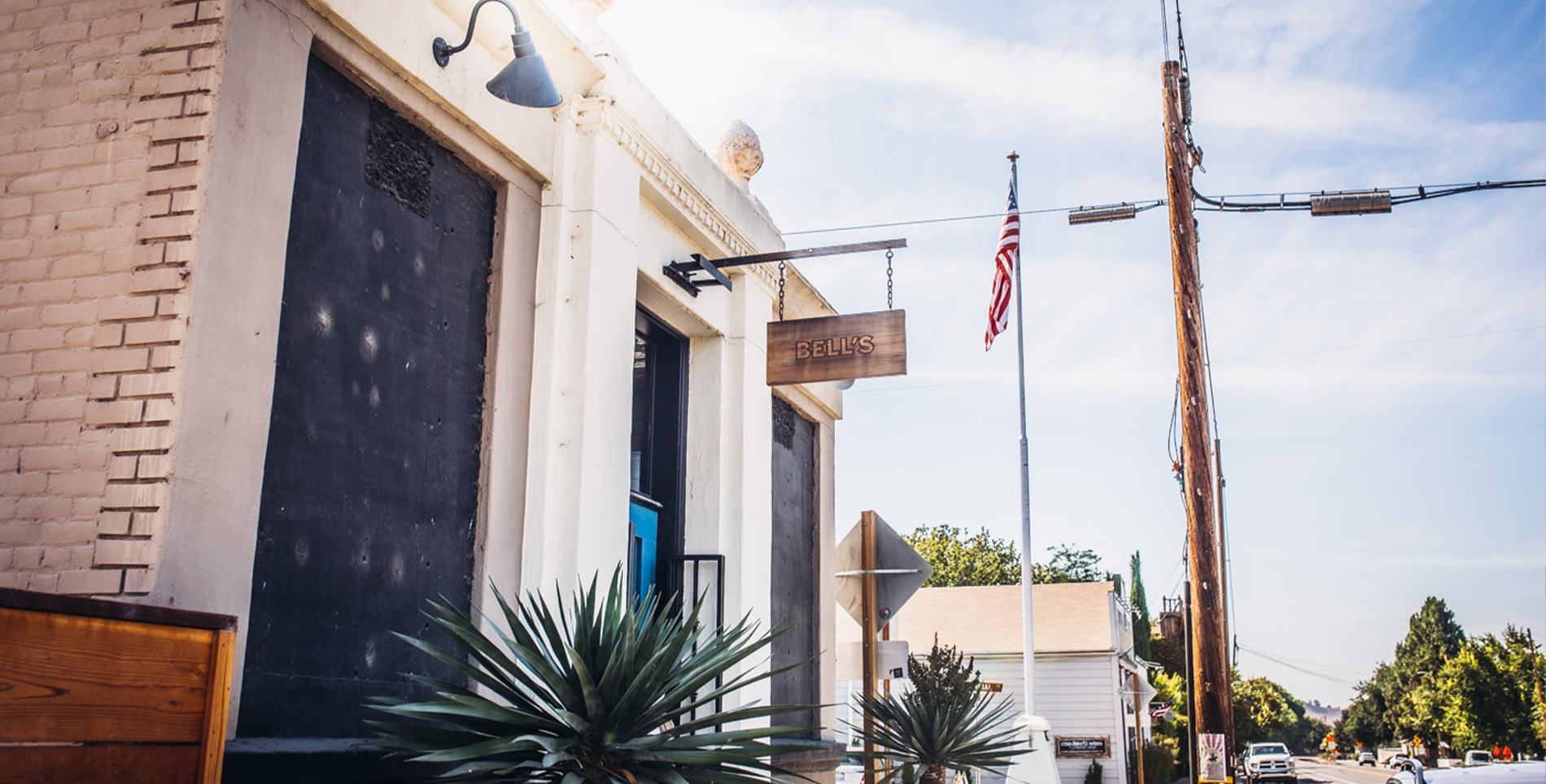
Editor’s Note: This story is published in The Industry Issue of Life & Thyme Post, our exclusive newspaper for Life & Thyme members. Get your copy.
“I can hold it if you need,” Greg Ryan, CEO and co-owner of Bell’s, says, motioning to the phone I’m holding between us that’s recording our conversation. It’s a cloudless September day as we sit in the shaded patio of the sister restaurant of Bell’s, Bar Le Côte, hiding from the Central Coast sun. Just inside, the Bar Le Côte team is preparing to start service, and you can faintly hear the bass line of “Rock Lobster” coming from their playlist through the wall.
There’s a question that hangs in the air between us as we talk, one that precedes practically every conversation these days. “Can you start with the past year and what that has looked like for Bell’s?” Ryan pauses for just a moment and says, “At this point now, it’s almost 18 months.”
The weight of those last months settles across his face as he furrows his brow and talks about the decisions he and his wife, Daisy, the chef and co-owner of Bell’s, had to make as the pandemic brought sweeping shutdowns. “We felt like the pandemic was like this giant circuit breaker that had been turned off,” Ryan says. “It was so devastating that if we didn’t try and do something better coming out of it, we were going to be pretty upset with ourselves.”
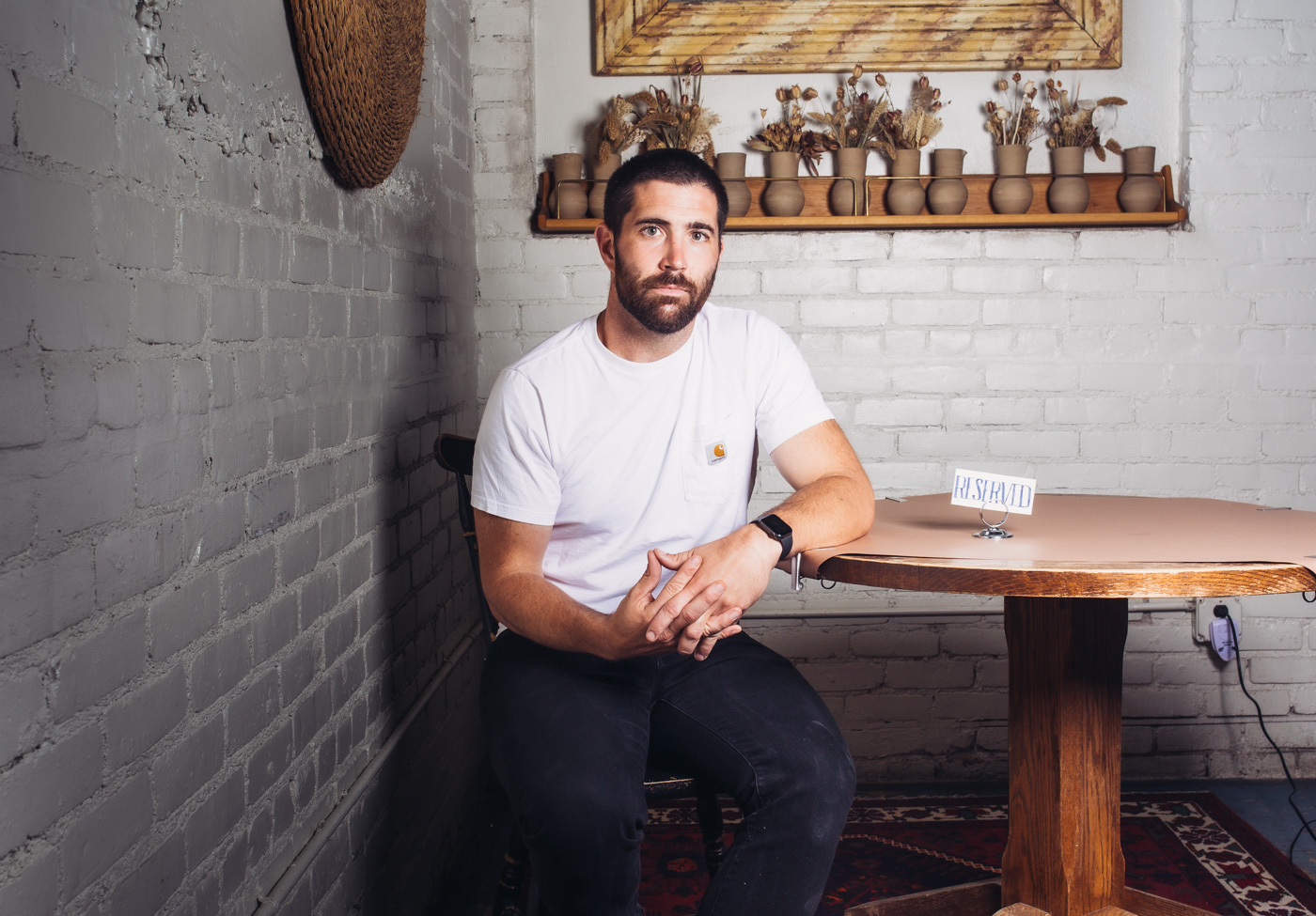
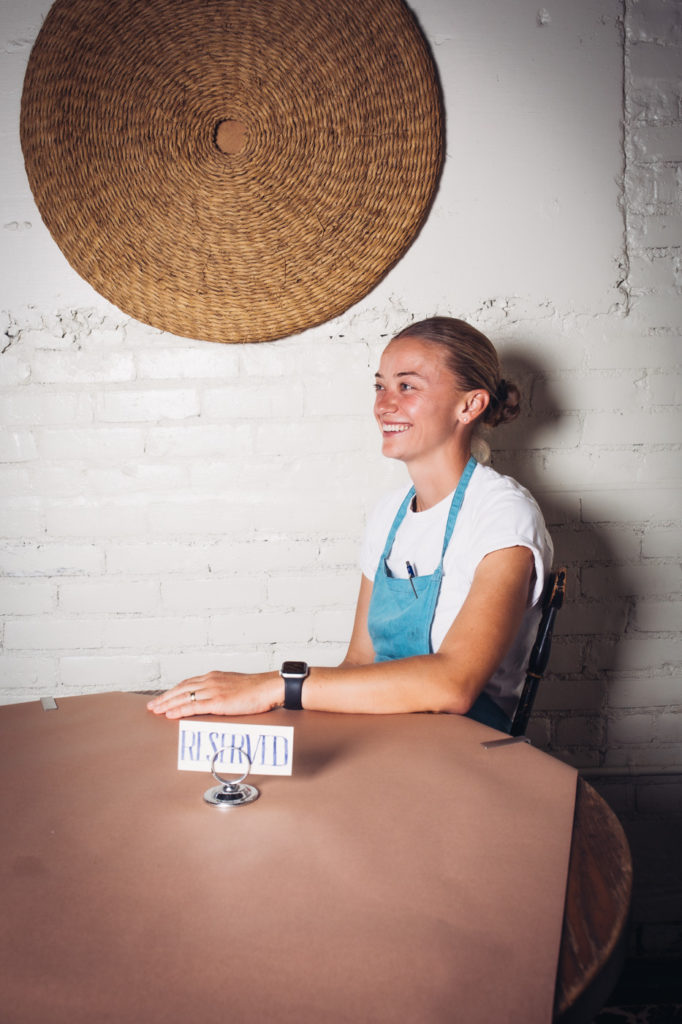
Ryan remembers the eve of the shutdown of onsite dining, which forced restaurants into a takeout-only model. That month also happened to coincide with Bell’s two-year anniversary. “We sat there and said, ‘Okay, what do we need?’” he recalls. The first concern was providing health care for the staff at Bell’s, and finding a way to move forward without furloughing anyone. He describes those first days as an “adrenaline push,” saying they were dead-set on making it work, whether through selling french-dip sandwiches or bottles of wine.
But then April came, and that adrenaline settled into morbid uncertainty. Ryan remembers that month as the darkest time for him and Daisy. The early burst of support they received started to wane as people stayed home, and although they still had the backing of the community they built around Bell’s, it was impossible to compensate for the loss of business.
That same month, Ryan’s phone rang with a call from a friend in the Bay Area who heard about a GoFundMe set up by a restaurant to provide meals to frontline workers at $15 a meal. He asked if Bell’s could make something like that happen in the Santa Ynez Valley. Ryan said he thought it was a good idea, and that he would get back to him.
His phone rang again—this time with a call from another friend who asked if he would be interested in making meals for frontline workers at Santa Ynez Valley Cottage Hospital. He agreed it was something they would be interested in doing, but wasn’t sure how to move forward with it while continuing to keep Bell’s afloat.
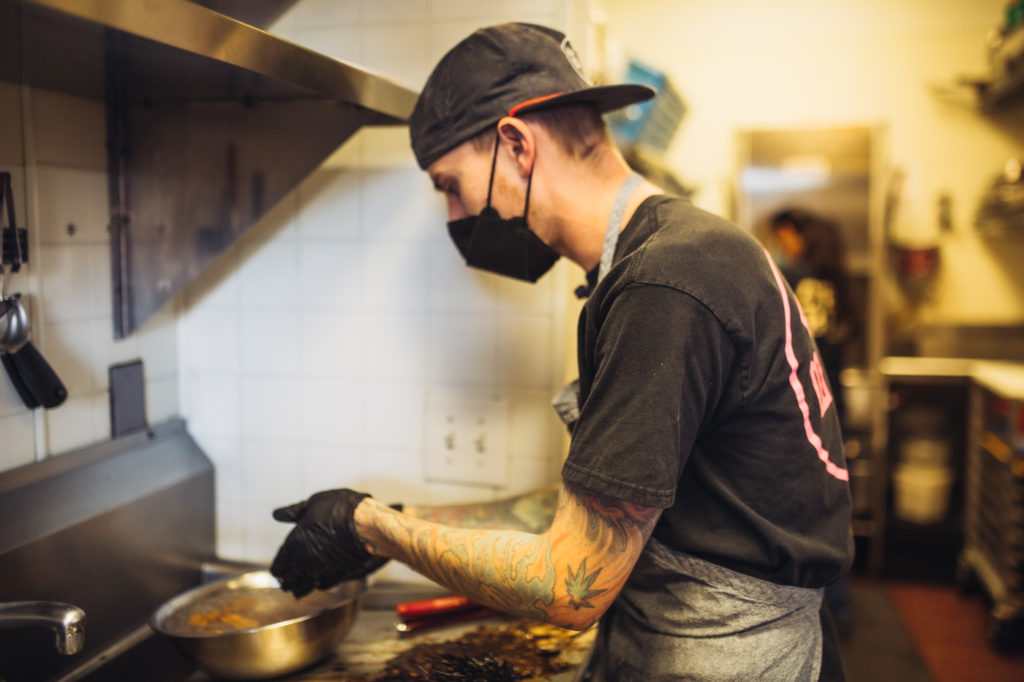
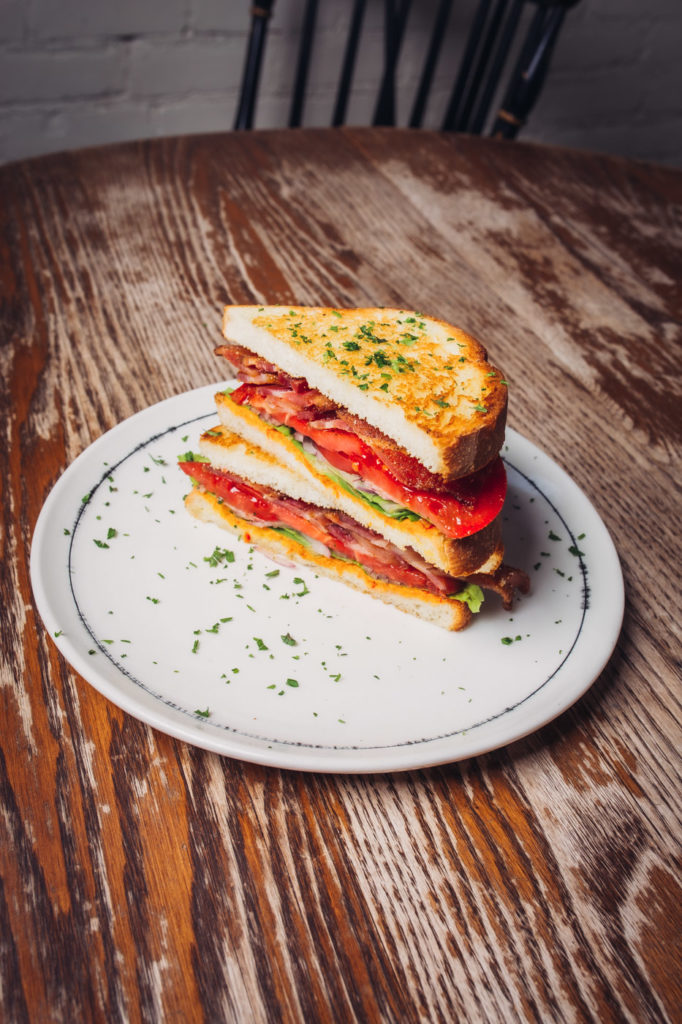
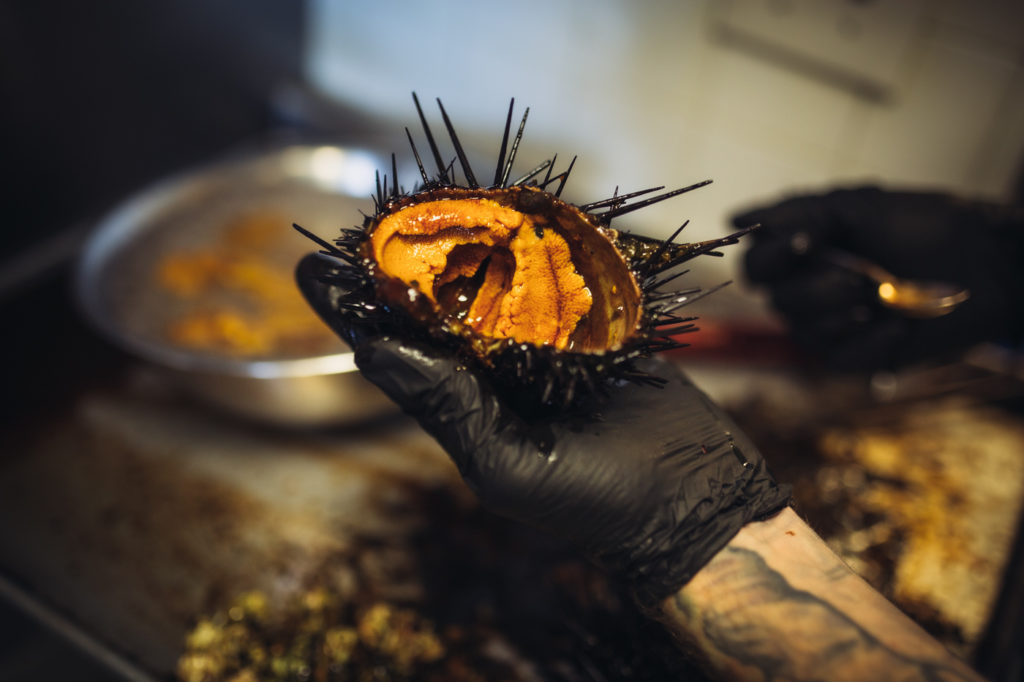
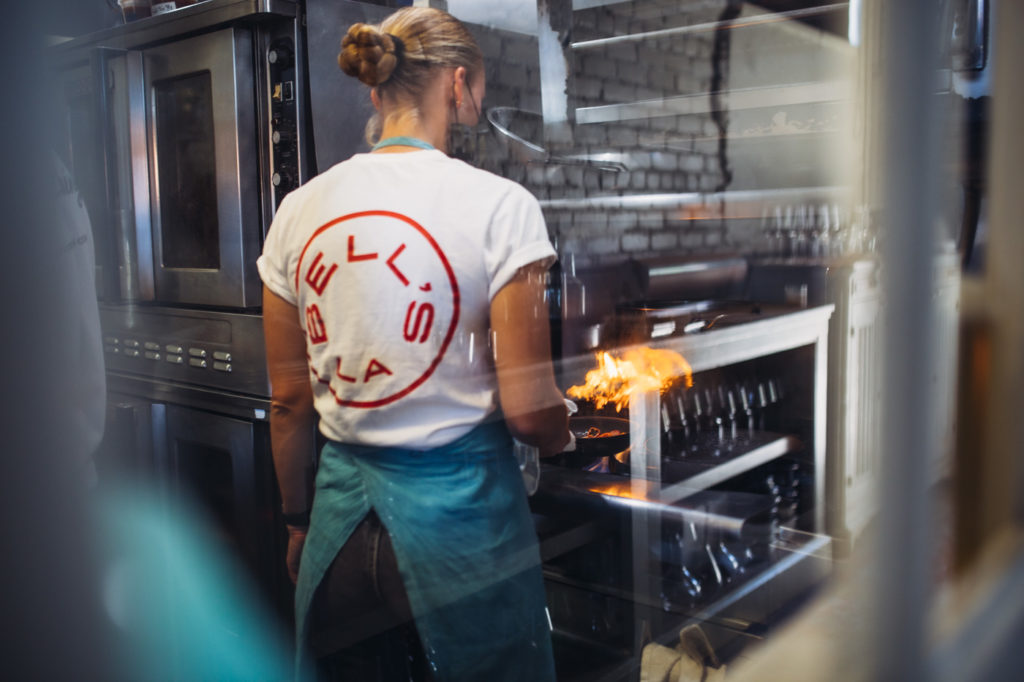
Ryan’s phone rang a third time that same day with a call from a guest who he remembers saying something along the lines of, “Listen, I don’t really want to buy a french-dip and a bottle of wine from you. What I want to do is help figure out how we can actually get food to people that actually need it.”
“I’ve been thinking about this all day,” Ryan told her.
As Greg and Daisy began to reach out to local hospitals, foundations, and even the senior center down the street, Feed the Valley was born. Within the first month, they were providing 300 to 400 meals a week, until June of 2020 when the program was temporarily paused. “We weren’t really sure what we had on our hands,” Ryan says. “We didn’t really feel like it was ready to try and offer to other people.” And at the time, it also felt as though another shutdown was looming.
For the next four months, Greg and Daisy built out the infrastructure of Feed the Valley. They designed a website and wrote a grant that allowed the Santa Barbara Foundation to act as their financial umbrella, and they started bringing other restaurants on board in November and December. “At that point, it was really about trying to feed people in need and help save restaurants,” Ryan notes. To date, they’ve served close to 10,000 meals and have raised about $80,000. While restaurants in the Santa Ynez Valley are back on their feet today, the program still exists to get food to those who need it.
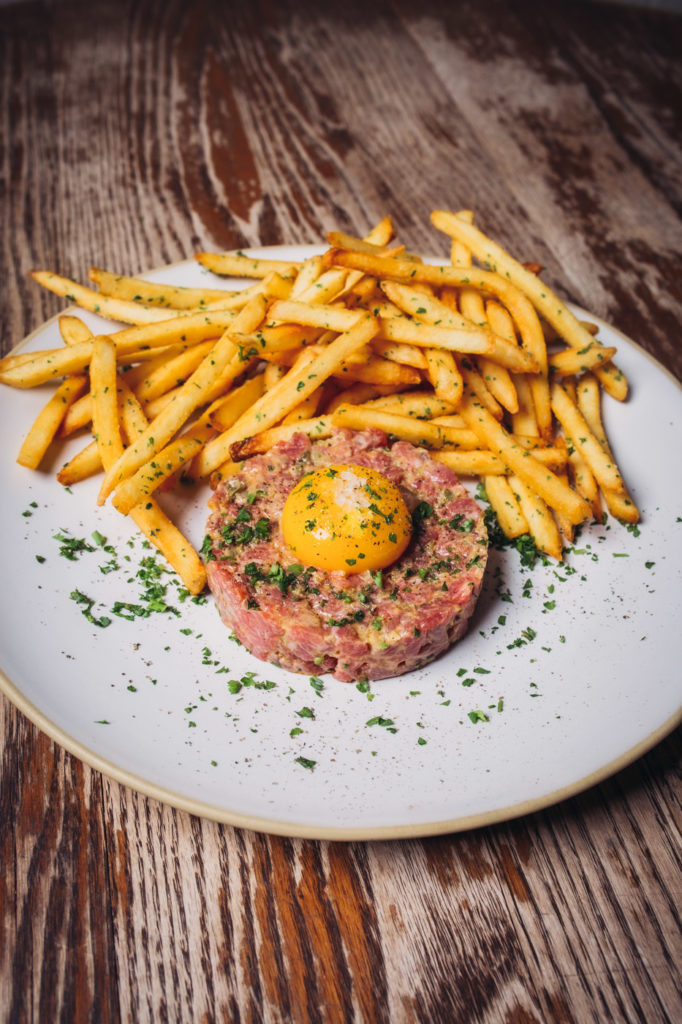
“We are in a little town that is socioeconomically diverse,” Ryan says. On Saturday mornings while driving into town, he remembers often seeing a line of cars around the corner waiting for food distribution at the senior center, then a line 60 deep outside of Bell’s for Priedite Barbecue just down the road. “You’re just like—what the fuck? It’s all happening at the same time,” he says.
The town Bell’s calls home, Los Alamos, is barely more than a single road lined with restaurants, antique stores, wine shops, and blocks of homes in each direction. It’s undoubtedly a tourist town, drawing in local and not-so-local visitors, set against the backdrop of the Santa Ynez Valley which is renowned for its vineyards and agriculture. Bell’s sits on the corner of Centennial and Bell Street, just across from a hotel and a park. It’s a small restaurant with a white exterior and a blue door welcoming patrons in, where a maximum of 17 indoor seats, plus four at the bar, are available for dining service. When you step inside, the walls are a white brick and each wooden table has a sheet of brown paper adorning its surface. Cookbooks hang from ladders leaning against walls and a narrow hallway leads to an expansive backyard where more tables and place settings await.
Bell’s has been on that corner since November of 2017 when Greg and Daisy moved to the Central Coast after the birth of their son, Henry. Daisy was raised in the Santa Ynez Valley and went on to graduate from Culinary Institute of America in Hyde Park and work at restaurants like Gramercy Tavern and Per Se before relocating to Los Angeles to help open The LINE hotel and then to Austin to run the beverage program for McGuire Moorman Hospitality. A return to the Santa Ynez Valley was a return home for her.
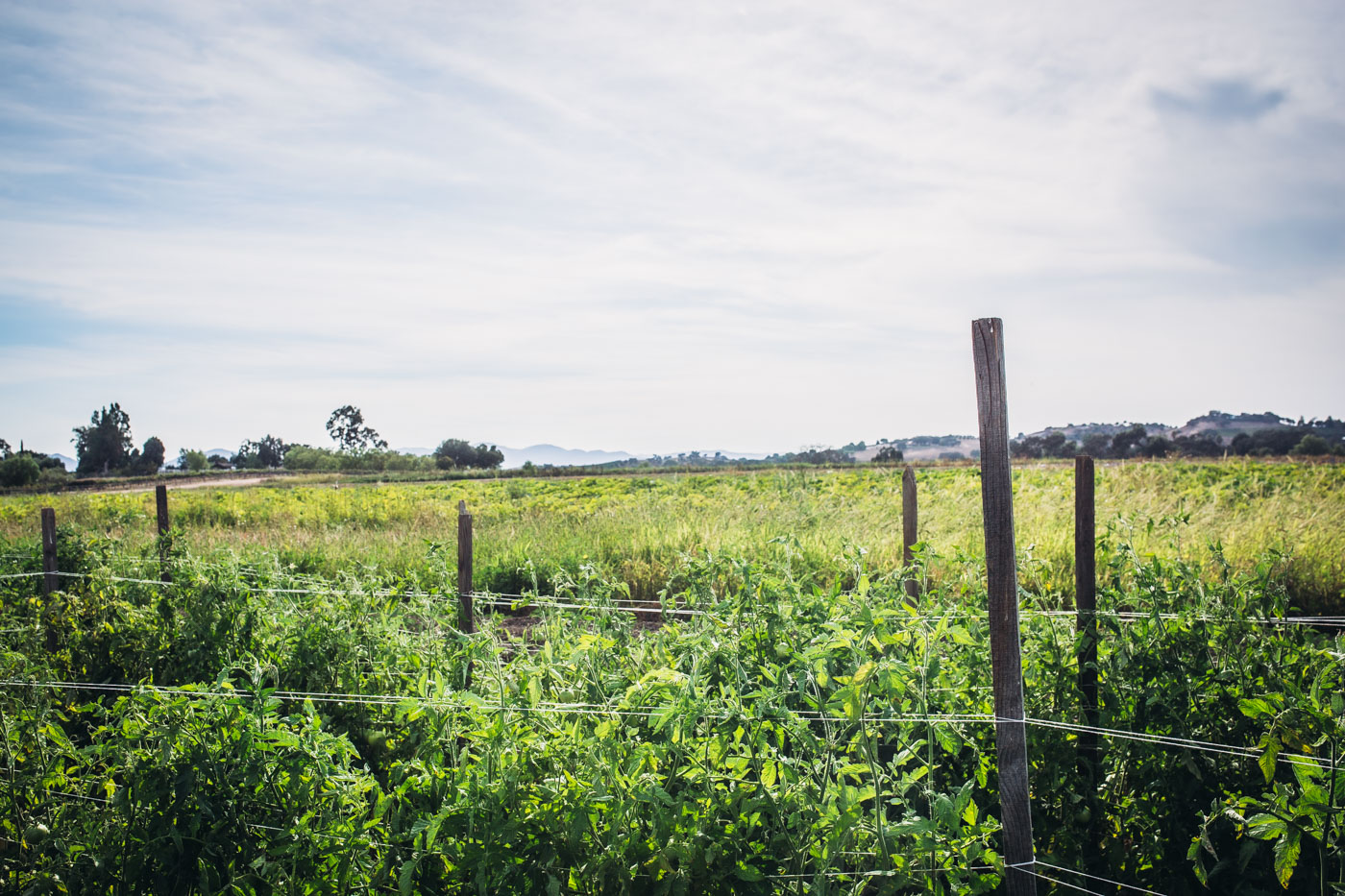
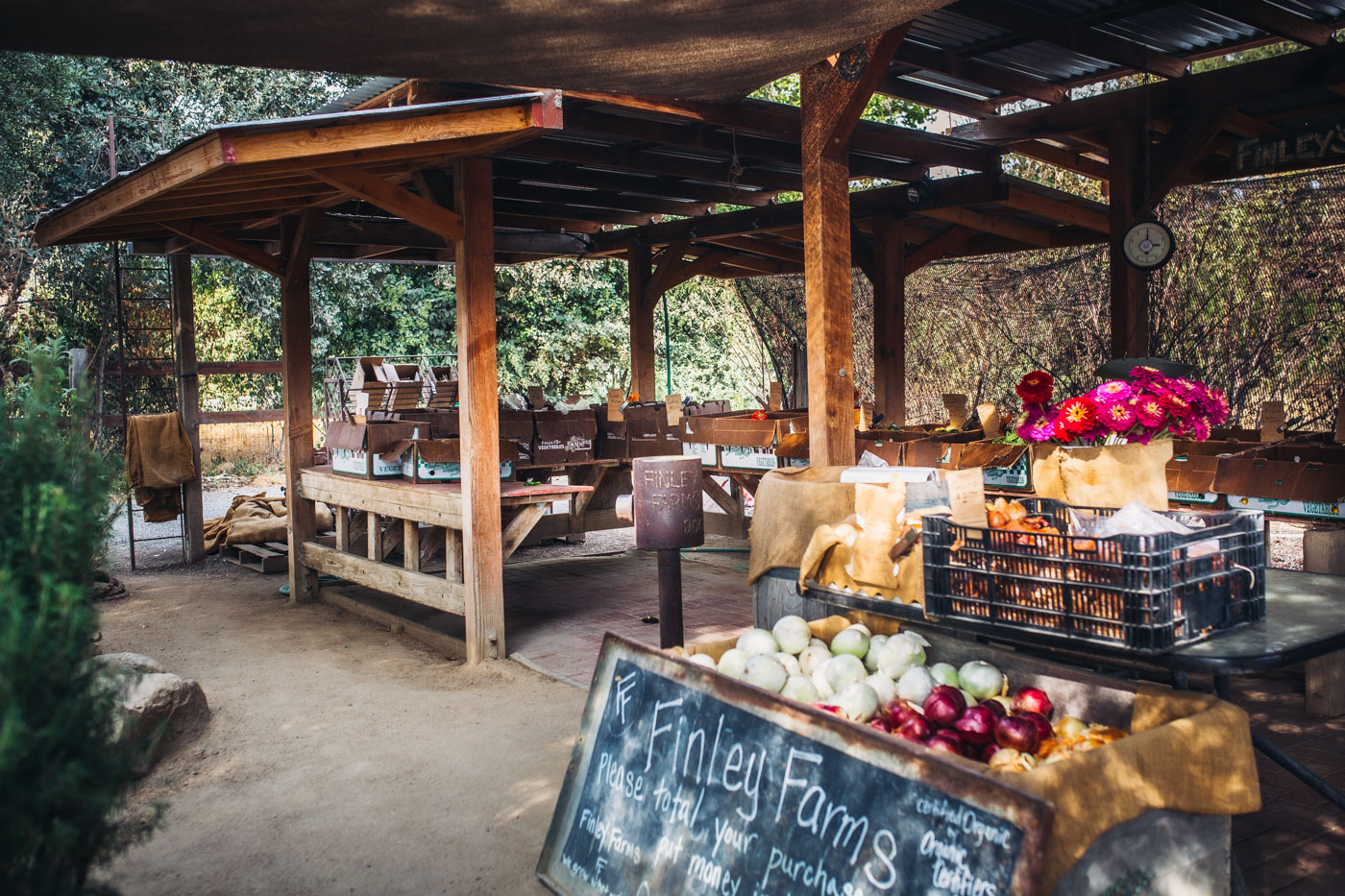
Bell’s officially opened its doors in March of 2018. Two-and-a-half years later, the restaurant has grown their staff from their pre-pandemic number of 11 to 26 employees. They’ve eliminated gratuity so tips wouldn’t make up their staff’s income, began their prix fixe dinner program that has allowed them to calculate a cost per seat, and started hosting Priedite Barbecue that runs out of their back patio.
While the past year has changed Bell’s in so many ways, including the recent addition of a Michelin star, much remains the same. The lettuce in their salad still comes from Finley Farms just down the road, their uni from Stephanie Mutz of Sea Stephanie Fish, and eggs from Motley Crew Ranch in Santa Rita Hills. And most importantly, according to their own joke, while it is not France, it is still good.
Ryan and I meet up with Chris Finley of Finley Farms after our conversation at Bar Le Côte to take a walk through the farmland he and his wife, Johanna, own. It’s clear both Finley and Ryan have a love for the Central Valley as we wander through the planted rows of lettuce and tomatoes, breathing in the scent of dirt and vines.
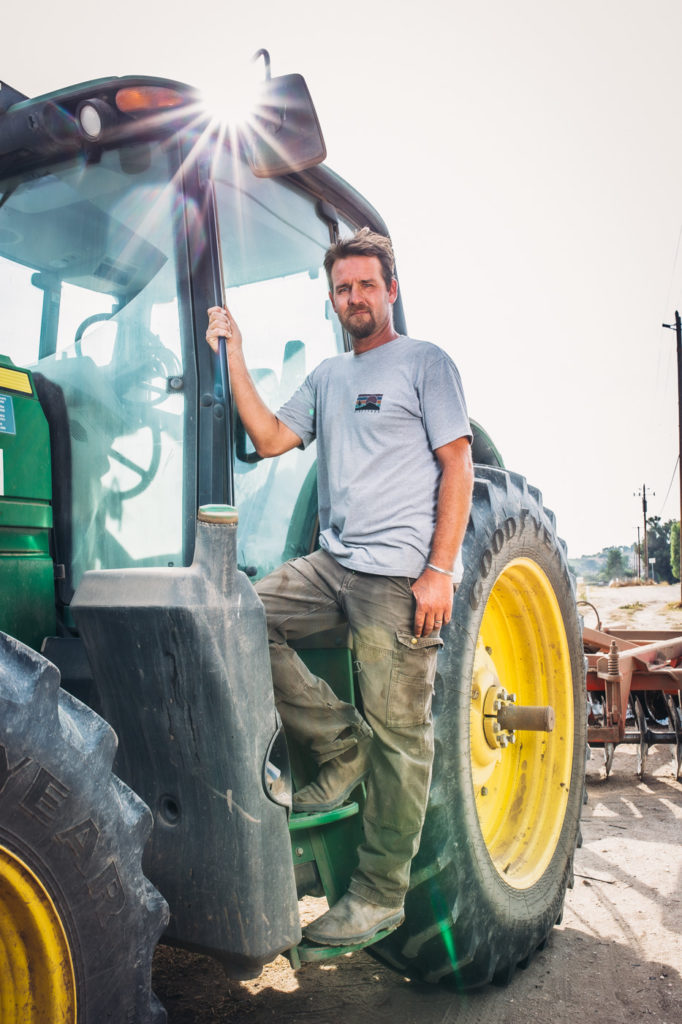


Finley has been in the farming business for 16 years and counting. He credits the farm-to-table movement for encouraging customers and chefs to have more interest in where their produce comes from, and for pushing chefs to slowly become less particular about imperfect produce. Although with a smaller-scale operation like his, crop availability just isn’t guaranteed in the same way that larger farms can.
But Daisy and Greg, who describe themselves as stubborn, have stuck with Finley Farms since day one. “We do all this out of spite now at this point,” Ryan jokes to Finley.
Ryan remembers making a point of visiting Finley Farms even before he and Daisy moved to the region to pick up ingredients for whatever they were cooking for dinner at home. After relocating to open Bell’s, they made a commitment to understanding the farming ecosystem they were moving into and how to best support the farmers who are a part of it.
With that commitment to using produce from Finley Farms also comes a commitment to altering a menu at the last minute to accommodate for crop unavailability. “If you’re that adamant about using this product, you have to be just as adamant not to use a product because it isn’t available,” Ryan says. But for Bell’s, it’s worth it for the freshness and quality of what Finley grows.
We walk past a row of lettuce that Finley identifies as Green Oak, which is one of the lettuces Bell’s use in their salads. Ryan estimates at least half of the lunch guests order the Bell’s Salad, and at night, each dinner guest will have a Salade of Finley Farms Lettuces placed in front of them. Rather than stockpiling the lettuce or ordering through a distributor, Greg and Daisy pick up the freshly-picked produce from Finley Farms each morning on their way to the restaurant. It travels just about 15 miles up the road to be washed and put in a walk-in shortly before ending up on a plate.
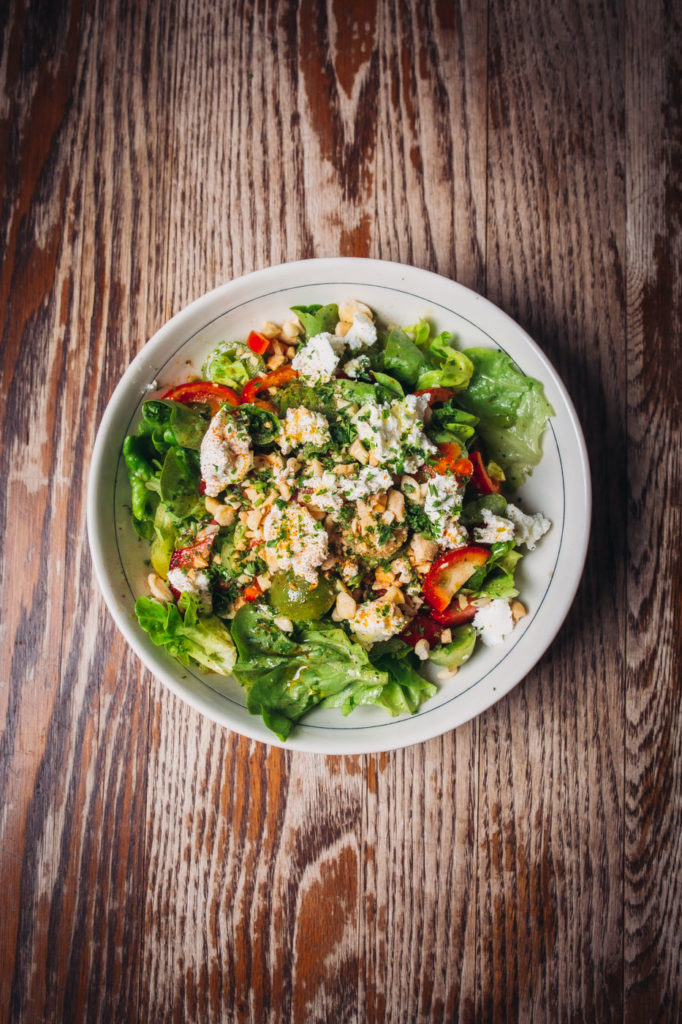
“That allows you to not have to alter [the produce] in any way,” Ryan explains. “Essentially, you’re just serving vegetables and products that you’re like, ‘I want to mess with this as little as possible because there’s nothing else you can do to improve upon it.’”
As the unwavering sun finally gives into a late afternoon glow, we walk back toward our cars, parked beside Finley’s tractor. As we part ways, with everyone offering thank-yous and goodbyes, it becomes clear that Bell’s is not just a restaurant in the Santa Ynez Valley—it’s a restaurant of the Santa Ynez Valley, molded by its farmers and the people who call it home.


Our comments section is for members only.
Join today to gain exclusive access.